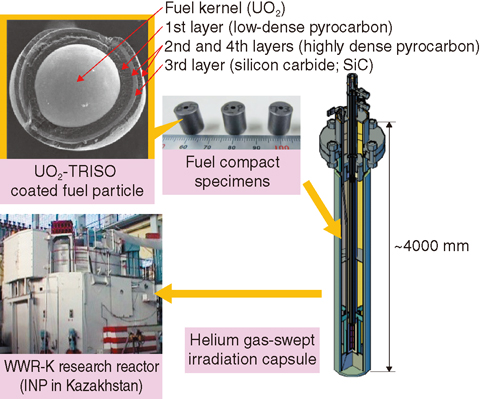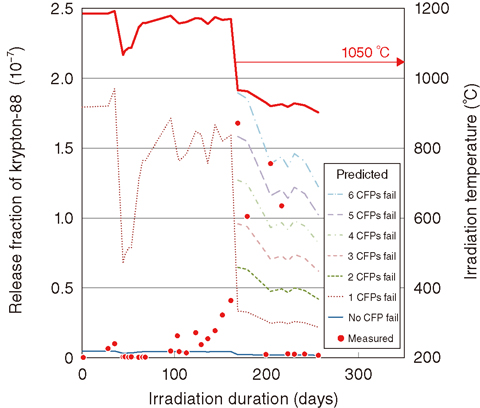
Fig.6-2 Capsule-irradiation test at the Institute of Nuclear Physics (INP) of the Republic of Kazakhstan

Fig.6-3 Evaluation results of the intactness of coated fuel particles by the release fraction of krypton-88 during neutron irradiation
A fuel with a maximum burnup targeted at 160 GWd/t is being developed to increase the economy of and to reduce waste by the practical high-temperature gas-cooled reactor (HTGR). During past investigations, a burnup of around 100 GWd/t has been obtained by researchers in Germany and the United States, corresponding to the average burnup of practical HTGR fuel. In Japan, we have obtained irradiation data for burnups up to 90 GWd/t through the High Temperature Engineering Test Reactor (HTTR) project. However, highly qualified fuels fabricated by a commercial fuel plant were not used in this precursor research. We have newly designed a high-burnup fuel and fabricated it in collaboration with Nuclear Fuel Industries, Ltd. Then, to obtain irradiation data for the new fuel, an irradiation test was conducted at the WWR-K research reactor at the Institute of Nuclear Physics (INP) of the Republic of Kazakhstan, where the HTGR is being developed as a national project. The irradiation test was started in October, 2012 and finished successfully in February 2015. The irradiation temperature was set to 1050±100 ℃ with a duration of 400 days, with 100 GWd/t being the target burnup. An irradiation capsule was designed and manufactured by INP and loaded at the WWR-K research reactor (Fig.6-2). INP measured krypton-88 as a fission gas (which is not influenced by the precursor nuclide) that is released into the swept-gas of the irradiation capsule to examine the integrity of the fuel during irradiation. To confirm the integrity of the coated fuel particle during irradiation, we evaluated an additional failure fraction of the particle by means of a fission gas-release model developed through the HTTR operation.
Fig.6-3 shows the result of a comparison of the measured release fraction of krypton-88 and the predicted one after 260 days (with a burnup of approximately 70 GWd/t). It was indicated that the measured release fraction was at the same level as that from the initial failure (i.e., the small amount of as-fabricated failure) of the coated fuel particles. Finally, an irradiation test was successfully performed at a burnup of 90 GWd/t by February, 2015, and it was confirmed for the first time that a highly qualified HTGR fuel, which is fabricated using a commercial fuel plant, showed good integrity under a high burnup corresponding to that of a practical HTGR. This has advantages for the development of a further extended-burnup HTGR fuel targeted at 160 GWd/t in the future.
For the next step, the irradiation properties of the fuel will be examined in detail by burnup measurement and the like through post-irradiation examination.
<Previous: 6 HTGR Hydrogen and Heat Application Research | Next: 6-2 >